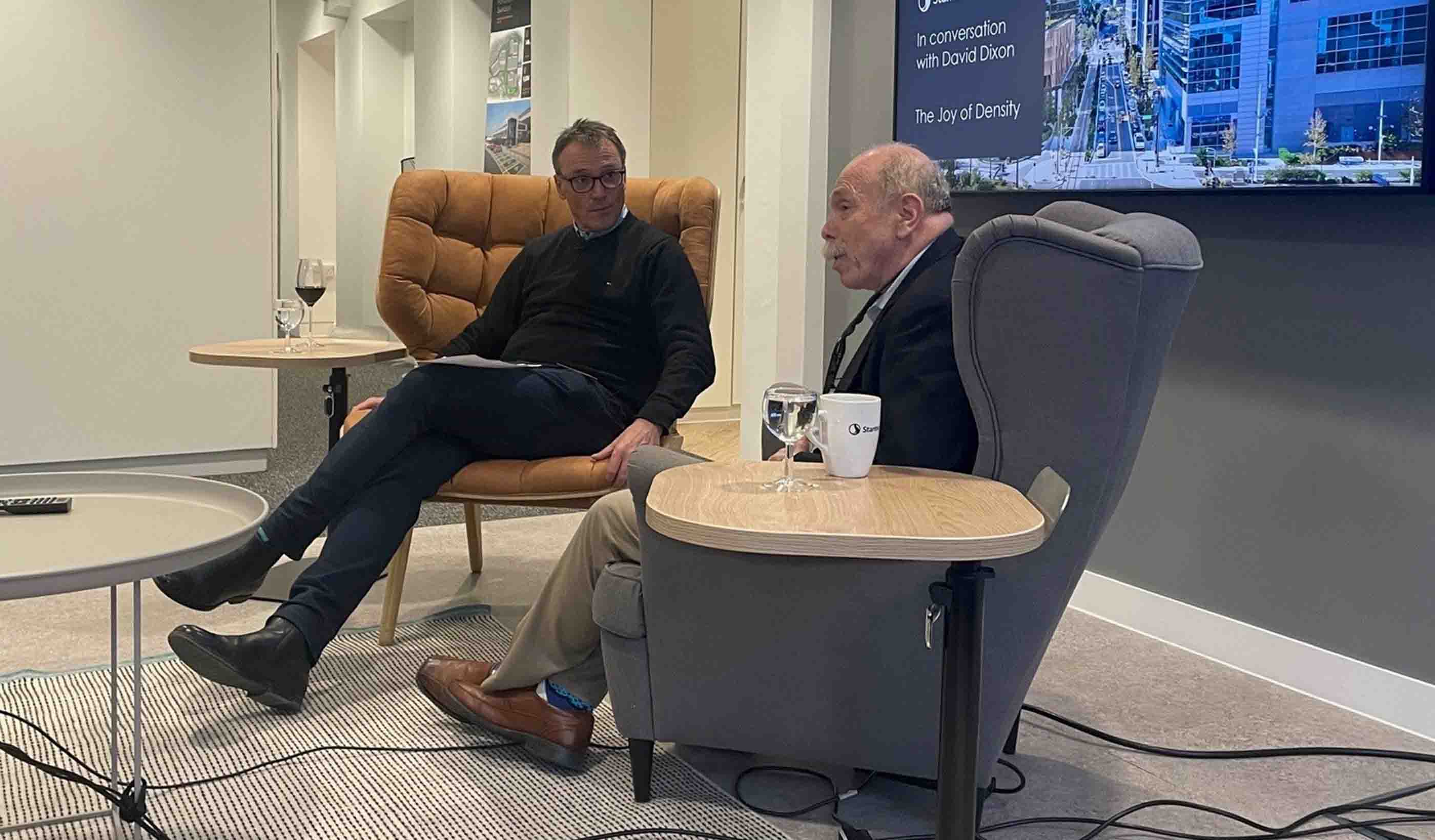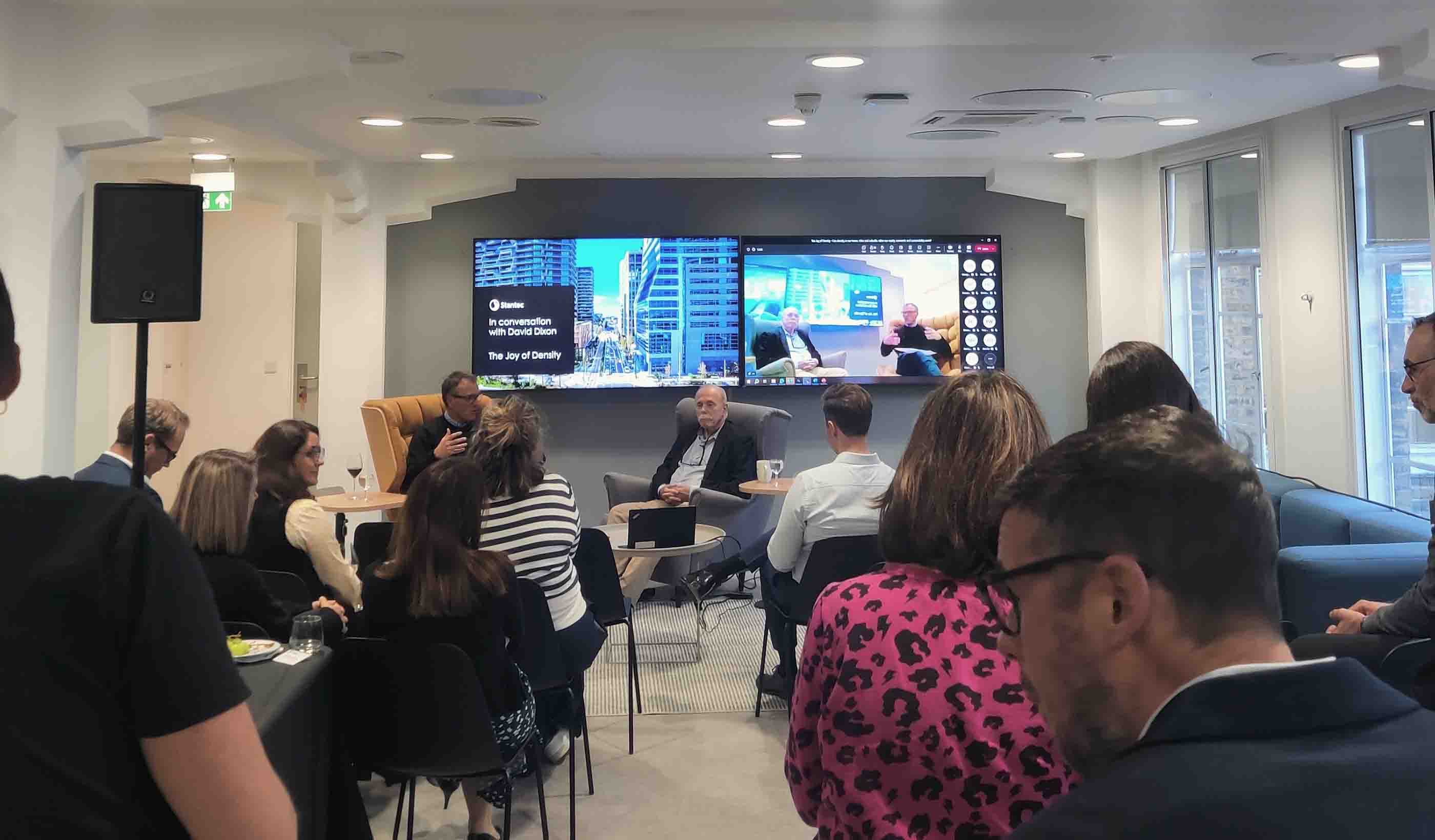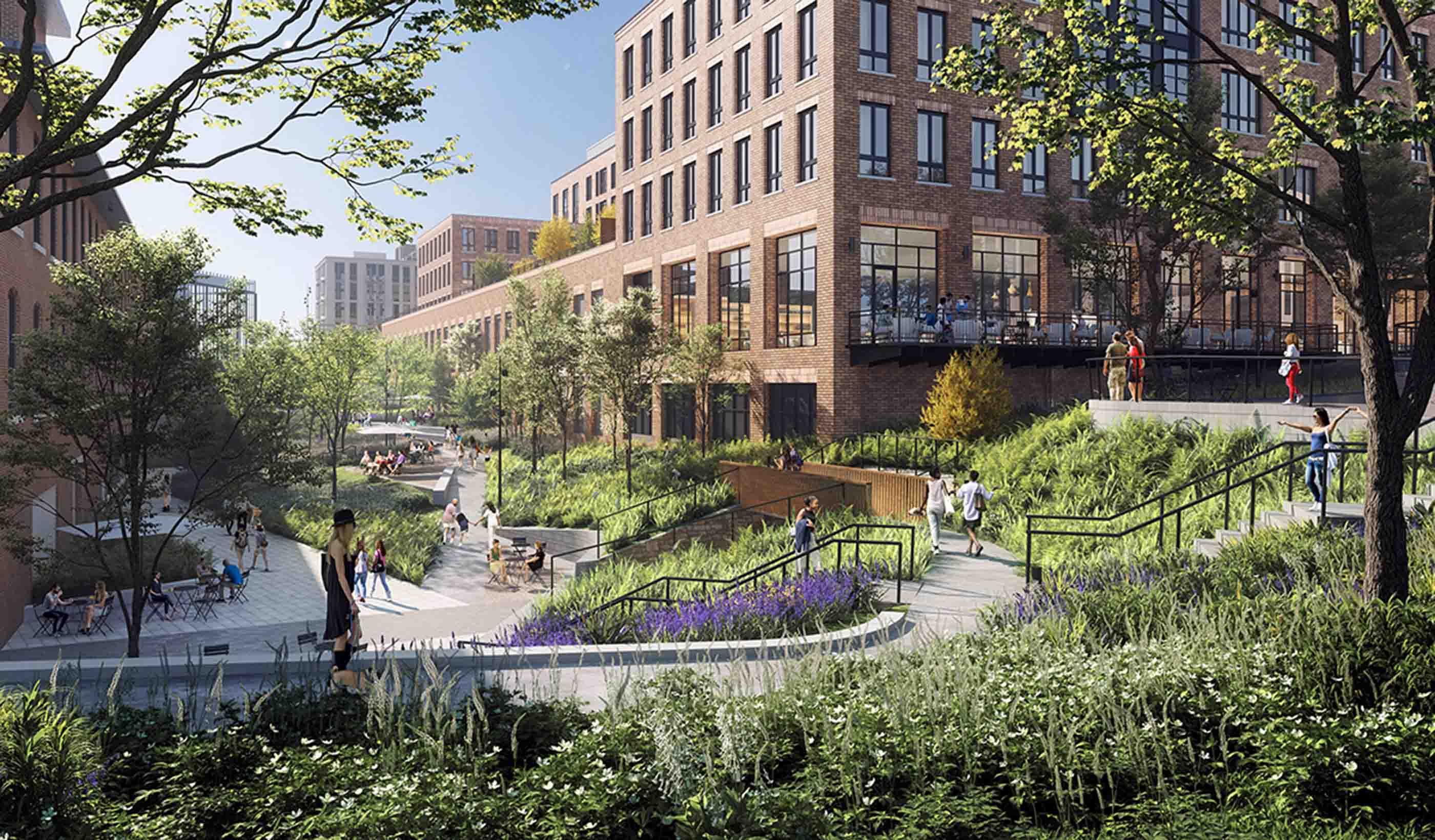Can urban density solve our equity, economic, and sustainability woes?
November 01, 2023
November 01, 2023
Iain Painting and David Dixon discuss shared trans-Atlantic planning challenges and urban density
One of the joys of joining Stantec is that I get a new bunch of friends. Our colleagues around the world are grappling with the same issues and challenges we have in the UK. Their context may be different but there is no doubt there is a shared theme and objective. The opportunity to share knowledge and expertise is one we are keen to grab and throw into the mix of discussion in the UK development industry.

Have we outgrown the model of a low-density, car-dependent society?
Most recently we got to do this with David Dixon, one of our lead Urban Design Directors in the US. David has been key to the urban intensification debate within North America for the last 30 years. This opportunity was timely given the noise around the ‘15-minute city’ concept, a proposition that enables you to walk or cycle to almost anywhere in a city you would need to go.
We spoke around this issue in the UK and what can we learn from North America’s experiences to date. You can listen to the full session here, but I wanted to summarise some core elements of our conversation that jumped out at me.
Firstly, I think we all need to be aware of our preconceived idea of the American real estate market. I picture suburban monoculture and hard inner urban environments, as seen in hit TV shows I watched as a child (on a black and white telly). I see a very different consenting regime; more car reliance; less land pressure; and different social, cultural, and political forces and issues. But they and the rest of the Western world face the same challenges we do: an ageing population, a shortage of skilled workers, increasing health and social inequality, and the same post-pandemic acceleration of change in our urban centres. As such, although the context differs, many of the solutions are transferable. At the very least, there is much to be learnt from the experience of others.

While being miles apart the US and the UK share similar urban challenges.
In our discussion, we talked at length about the societal changes we are seeing—and the maintained importance of interaction and community we all require. This might just be incidental knowledge sharing, but can we deliver the thriving communities we need by more proactively combating loneliness?
The US is seeing the same competition for knowledge economy and talent. They are facing the same challenges around perceived gentrification and resistance to the dismantling of car-dependent lifestyles. But they are seeing a strong response from some to use density and ‘5-minute’ neighbourhoods to tackle skills shortages and drive economic growth. As an aside, David identified the car dependency and sedentary nature of American society as driving a 5-minute isochrone as opposed to 15-minute. Evidently, we walk further here in the UK.
I often say that adopting a sustainable lifestyle in the UK—i.e., transitioning to electric vehicles, hybrid working, and new technology to reduce carbon footprints—can be the luxury of the wealthy.
Environmental policy and flat taxation are, in large part, going against the long-established principle here in the UK of progressive taxation and policy. The ULEZ (Ultra Low Emission Zone) extension in London is a case in point. This is no different in the US, but David’s perspective on how we can make a better case for densification to overcome this in the UK was a good one. To build consensus and drive behavioural change, we need to better expose how it can enhance the economic opportunities for a broad range of people from diverse social backgrounds.
It was said, one knowledge economy job can deliver around five further employment opportunities in a neighbourhood. If true, an influx of residential homes in our urban centres will drive a greater spend on local amenities than the offices and office workers before them, especially in a post-pandemic working environment.
To make these new reimagined neighbourhoods accessible to all, we must bake in a diverse range of tenancy types at an early stage. In so doing, we can build communities that can support each other at every level. We are living with an ageing population and growing proportion of one- and two-person households. By delivering more smaller homes, we can also better meet a huge chunk of housing need.
Another area David identified that we are perhaps not sufficiently considering in the UK is the ‘workforce readiness’ perspective. The limitations of employment placed in the US upon a low-income single parent or anyone with a criminal record living in a car-dependent neighbourhood often takes these people out of the workforce. Putting aside social justice, with a shrinking working-age population this is a proportion of the workforce we can ill-afford to lose.
Calling for workforce readiness training as well as skills training programmes to accompany urban intensification schemes is vital. It will help deliver equitable opportunity and, as a result, diverse and sustainable communities. We need to see more of it in our urban regeneration schemes and programmes.

How can we build truly resilient and healthy communities that thrive?
Using data better was another point David made, and one we often debate within the UK. We face so many challenges around a lack of data, or it being out of date, and how this impacts decision-making. We need to tackle these issues head on if we are to be able to share with communities the clear changes in behaviour emerging and the opportunities for everyone brought by this change. In turn, this can help to build a consensus, support, and momentum. It is easier said than done, but as an industry we have to quickly get better at this if we are to tackle the current rhetoric.
Finally, I thought David put forward an interesting perspective around not judging the policies and interventions of the past in the context of today. Robert Moses and a car-dependent society and infrastructure programme could be considered an appropriate response to the context of 1970s America for example. We have simply outgrown that model of suburban, low-density, and car dependency which determined that urban form. We need a new paradigm for a new age that responds to challenges and aspirations of today’s communities.
There is always a chance we’ll need to revisit the solutions we come up with today to meet tomorrow’s challenges in 10-years’ time, but that doesn’t mean inaction is a solution (I am often heard making the point that policymakers rely on the fact that they cannot be criticised for not making a decision). Instead, we need to deliver with flexibility. We need to be prepared to change direction as conditions and data changes our perspective. We need to constantly adjust and not seek ‘super solutions’ at scale.
Urban intensification is an evolution not a revolution, and we need to build the consensus in communities that will support acceptance and, in turn, enable us to maximise the benefits of success for everyone. This is easy to say but certainly not easy to do. Especially in the face of the acute housing crisis. But it is essential if we are to avoid repeating the mistakes of the past in the UK, or across the Western world, and address the challenges of today and tomorrow.